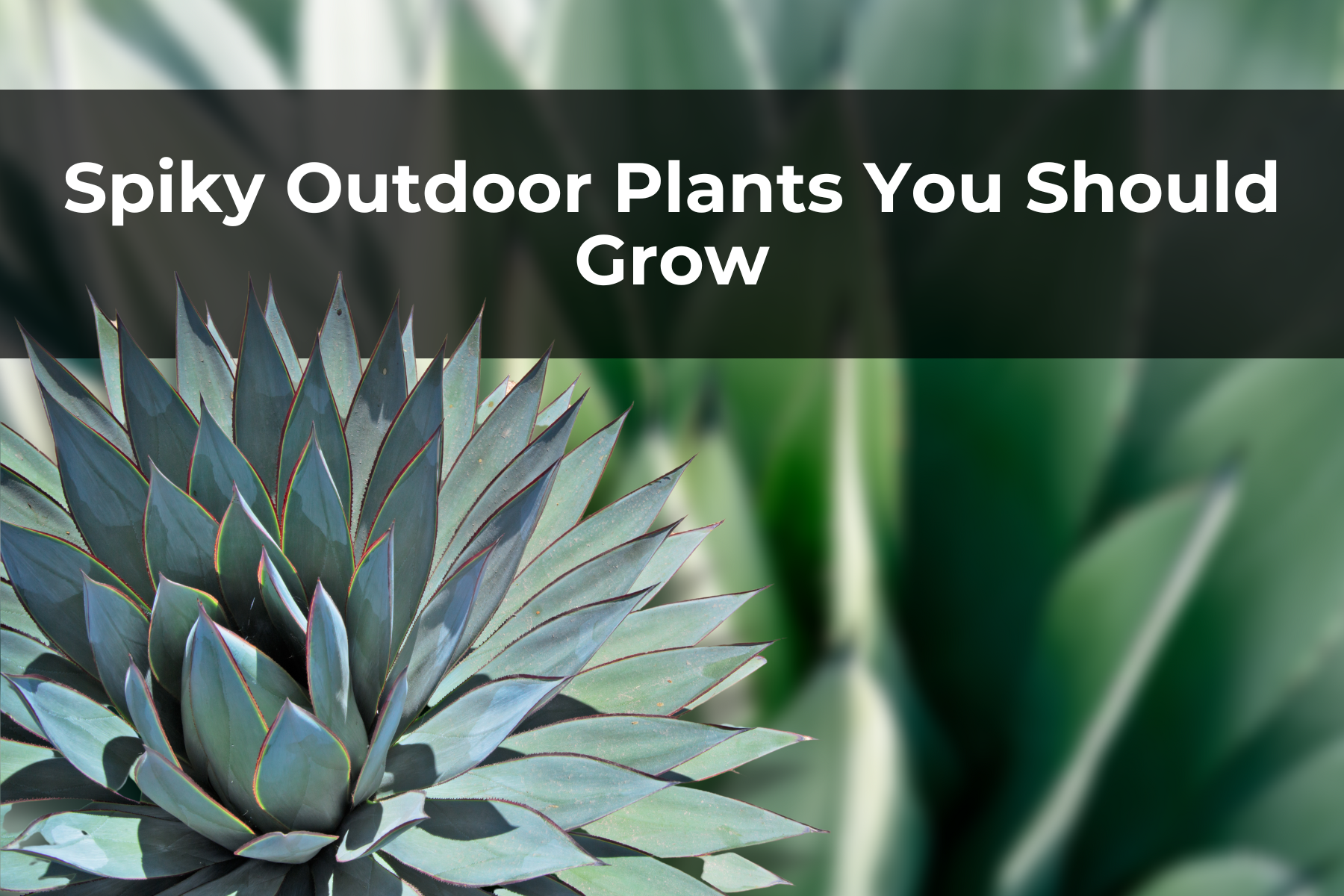Last Updated on April 12, 2024 by Real Men Sow
Spiky Outdoor plants for use in borders or pots can give your garden an architectural twist and add architectural features. Although most plants with spiky leaves prefer warm, humid climates there are some that can thrive in the UK.
Using Spiky Outdoor Plants In Your Garden
You can use spiky plants in your garden to create an exotic atmosphere. They also work well in patio or seating designs. To break up the traditional English garden look, you can use spiky plants as borders. Cordylines and grasses can grow up to 2M high.
Many exotic spiky plants can be difficult to grow in the UK. However, there are three main options: spiky thistles for small-flowering perennials, grasses, or larger shrubs.
Agaves
Agaves are succulents that come from Mexico. There are hundreds of varieties. While many varieties aren’t frost-hardy they can be grown in varieties that can withstand the winters of the UK. Agave parryi and Agave americana are the best agaves for growing in the UK. Agave Americana can live for up to 30 years, reaching a height of 5m. However, they will die after they bloom.
Blue Grass (Festuca glauca)
Grasses can be a great addition to outdoor spaces. I love the bluegrass variety, and have it in several areas of my garden. Festuca glauca can be left alone if you are on vacation because it is extremely hardy and considered ‘drought proof’. This grass is great in rockery settings with alpines, or in containers with a few perennials.
Cordyline
Cordylines are a great contrast with other plants, and have beautiful architectural foliage. Cordylines are an exotic looking plant that can be grown in the UK, provided temperatures do not drop below -5 C. You may need to cover your plant over winter if it is very cold. Cordylines thrive in salty winds and are also well-suited for coastal areas.
Cordylines can get very large in a short time. If you are concerned about their size, consider growing them in containers.
Eryngium (sea-holly)
Eryngium is a great choice if you’re looking for a plant that will add a splash of color to your borders. They are a thistle-like flower, is native to the coast. This plant is easy-to-grow and loved by bees, and other pollinators. Eryngium can also be used to add winter interest due to its architecturally spiky heads, which remain after flowering.
There are many types of sea holly. I bought the ‘Eryngium variifolium and ‘Eryngiumx tripartitum’ varieties and planted them in my new border. The variifolium’s actual stem is quite spiky and sharp. Once they bloom together, the variifolium will look great in front of my astilbes.
Ferns
Shaded areas can be made for ferns. They are great for creating textures and different patterns in a garden. There are many types of ferns, including some with flat glossy leaves. For architectural ferns, choose Athyrium Niponicum or Dryopteris wallichiana.
Globe Artichoke (Cynara Scolymus)
Globe artichokes are a great looking perennial that towers above other border perennials. They have 1.5M thick stems and have spiky heads. They look great with other plants, and they can be eaten. Harvest them when your fist is about the same size as the stem. You can cut them off if they are starting to open.
Phormium Tenax ‘Joker’
This plant provides you with evergreen leaves, which is a great addition to winter interest after most perennials have gone. They are similar to Cordylines and thrive in coastal areas. Phormium Tenax is a tall plant that can grow to 100 cm in height and will look stunning in a modern pot. Phormium Tenax also makes unusual flowers in July and August.
Yucca
Because many varieties of Yucca are not frost-hardy, they are best grown indoors in the UK. You can grow Yuccas in pots, but they must be brought indoors during winter.
A few yucca varieties are hardy enough to survive the UK winter, particularly if you live in the south. The RHS hardiness rating for yucca filamentosa and yucca glossaria is H5; they can withstand temperatures as low as -10 C.

